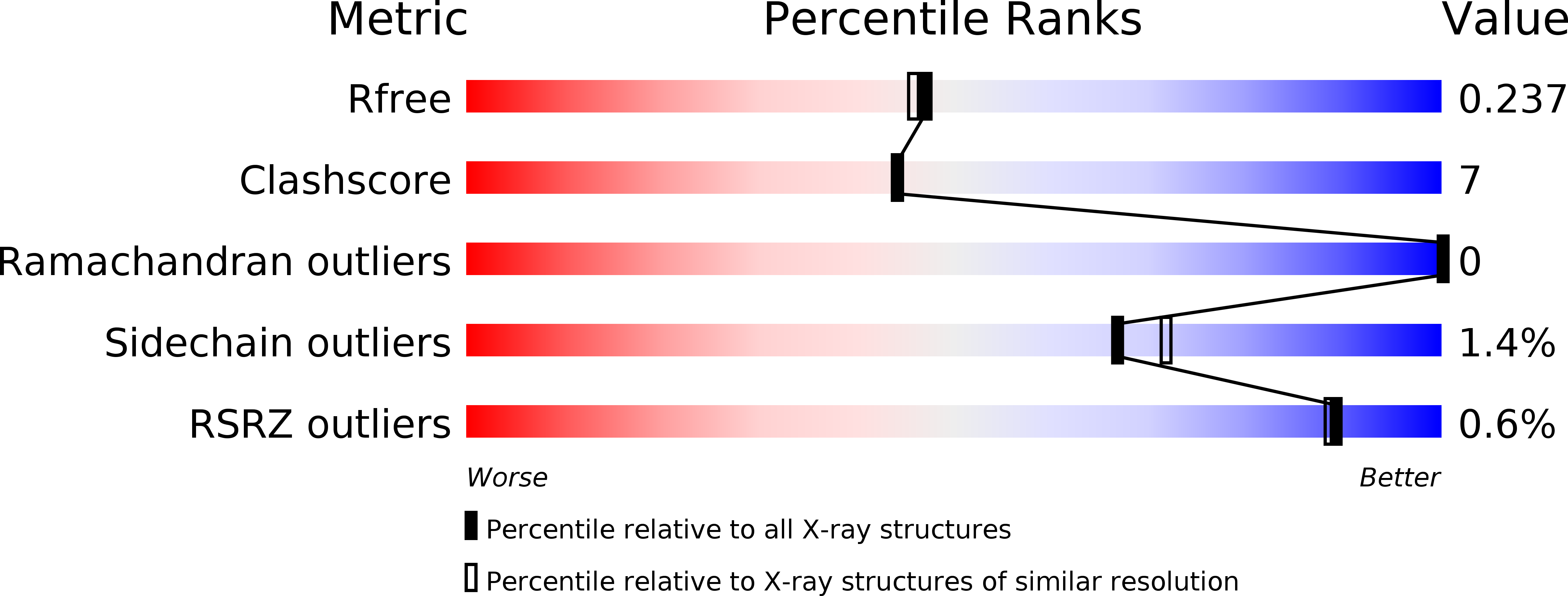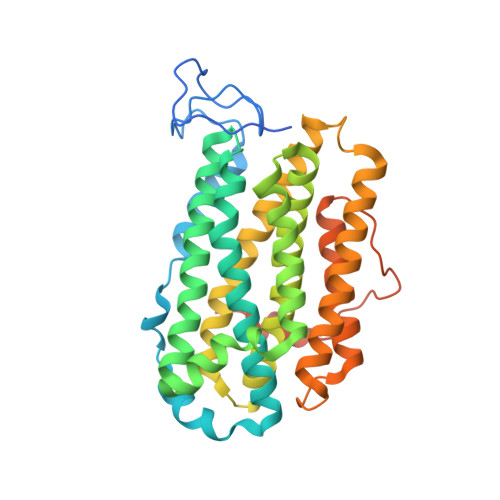A ribonucleotide reductase from Clostridium botulinum reveals distinct evolutionary pathways to regulation via the overall activity site.
Martinez-Carranza, M., Jonna, V.R., Lundin, D., Sahlin, M., Carlson, L.A., Jemal, N., Hogbom, M., Sjoberg, B.M., Stenmark, P., Hofer, A.(2020) J Biol Chem 295: 15576-15587
- PubMed: 32883811
- DOI: https://doi.org/10.1074/jbc.RA120.014895
- Primary Citation of Related Structures:
6ZJK - PubMed Abstract:
Ribonucleotide reductase (RNR) is a central enzyme for the synthesis of DNA building blocks. Most aerobic organisms, including nearly all eukaryotes, have class I RNRs consisting of R1 and R2 subunits. The catalytic R1 subunit contains an overall activity site that can allosterically turn the enzyme on or off by the binding of ATP or dATP, respectively. The mechanism behind the ability to turn the enzyme off via the R1 subunit involves the formation of different types of R1 oligomers in most studied species and R1-R2 octamers in Escherichia coli To better understand the distribution of different oligomerization mechanisms, we characterized the enzyme from Clostridium botulinum , which belongs to a subclass of class I RNRs not studied before. The recombinantly expressed enzyme was analyzed by size-exclusion chromatography, gas-phase electrophoretic mobility macromolecular analysis, EM, X-ray crystallography, and enzyme assays. Interestingly, it shares the ability of the E. coli RNR to form inhibited R1-R2 octamers in the presence of dATP but, unlike the E. coli enzyme, cannot be turned off by combinations of ATP and dGTP/dTTP. A phylogenetic analysis of class I RNRs suggests that activity regulation is not ancestral but was gained after the first subclasses diverged and that RNR subclasses with inhibition mechanisms involving R1 oligomerization belong to a clade separated from the two subclasses forming R1-R2 octamers. These results give further insight into activity regulation in class I RNRs as an evolutionarily dynamic process.
Organizational Affiliation:
Department of Biochemistry and Biophysics, Stockholm University, Stockholm, Sweden.
















